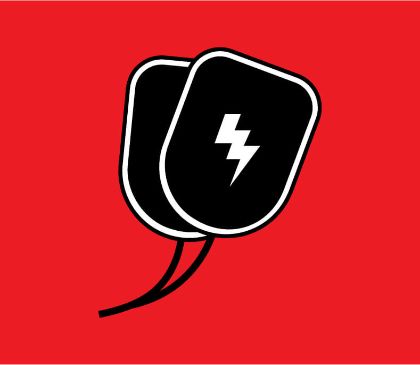Do I Need Training to Operate an AED?
- Oct 8, 2018

Anyone can use an AED, even if they haven’t completed formal CPR and AED training.
The great thing about modern AEDs is that they’re designed to be used by untrained, non-medical personnel as well as trained emergency responders such as EMTs, firefighters, and law enforcement officers.
If you witness someone experiencing sudden cardiac arrest (SCA) you can and should use an AED if there’s one available. AEDs not only defibrillate but most models guide rescuers through CPR. CPR and AEDs can dramatically increase survival rates for sudden cardiac arrest (Science Daily).
Most AEDs offer audio instructions for AED use and performing CPR such as, “apply pads to patient’s bare chest” and “press red shock button.” Some AEDs, like the Defibtech Lifeline View AED offer not only clear audio instructions for using the device, but they also bring the rescue to life with clear, full-color video instruction.
So do you need training to operate an AED? The short answer is no. However, here at Cardio Partners, we strongly recommend AED and CPR training to help you increase your comfort and level of confidence.
Where can I learn how to use an AED?
We recommend contacting the American Heart Association (AHA) and the American Red Cross to find AED and CPR individual certification classes near you. If you’re interested in setting up a company-wide training, contact us, we hold trainings all over the country and we can help.
Why is CPR so important if I have an AED?
AEDs are designed to shock a fibrillating heart back into a normal rhythm. While an AED may restart the heart, it won’t keep blood pumping to critical organs. In some instances, several shocks may be required and it’s important to keep the blood flowing during the entire rescue process.
CPR, or cardiopulmonary resuscitation, is an easy-to-learn first aid technique that can keep the victims of sudden cardiac arrest (SCA) or other medical emergencies alive until medical professionals can take over.
You’ll also learn incredibly useful information about the out-of-hospital chain of survival, for example.
Hint:
The AHA lists the 5 links in the adult out-of-hospital Chain of Survival are
- Recognition of cardiac arrest and activation of the emergency response system
- Early cardiopulmonary resuscitation (CPR) with an emphasis on chest compressions
- Rapid defibrillation
- Basic and advanced emergency medical services
- Advanced life support and post-cardiac arrest care
For more information, check out (Almost) Everything You Need to Know About CPR and AEDs.
All of us here at Cardio Partners and AED.com are ready to help you find the AED that’s best for your business, home, NGO, or nonprofit organization! And if you’re looking for CPR, first aid, and AED certifications, we have you covered on that front as well. Visit AED.com or call Cardio Partners at 800-544-0004. You can also email us at customerservice@cardiopartners.com.
DISCLAIMER: Information and resources found on the cardiopartners.com and aed.com websites/blogs is intended to educate, inform, and motivate readers to make their health and wellness decisions after consulting with their healthcare provider. The authors are not healthcare providers. NO information on this site should be used to diagnose, treat, prevent, or cure any disease or condition.








 CALL US:
CALL US: